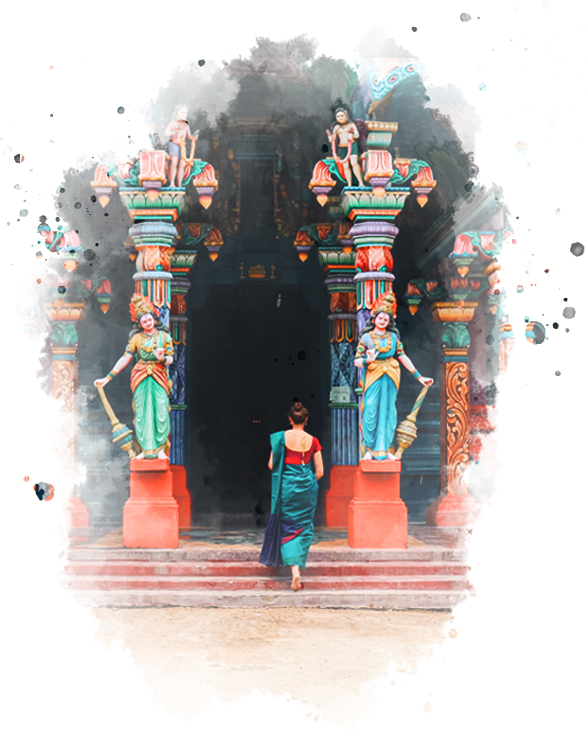
Jaffna, Nothern Cultural Capital
Things to do, weather & itineraries
The road less travelled leads to the north of Sri Lanka, where the threads of culture, history, and spirituality are woven into the tapestry of Jaffna by the devotees who breathe life into the land. As the remnant of both an ancient kingdom and a civil war that ravaged the nation, Jaffna stands as a testament to the resilience of the Tamil community, and it offers a bite-sized introduction to their vibrant culture.
At the forefront of Jaffna’s many attractions is the Nallur Kandaswamy Kovil, which reflects the grandeur of the fallen Jaffna kingdom. However, the city is also known for a Dutch fort that has weathered through the island’s many battles, a bustling marketplace where the locals sell their wares, and a pristine beach where clusters of Casuarina trees provide shelter from the blistering heat.
The average temperatures in Jaffna range from 25°C to 32°C (77°F to 89.6°F), making it one of the hottest places to see in Sri Lanka. Despite this, the best time to tour the region is during its dry season, which extends from February to August.
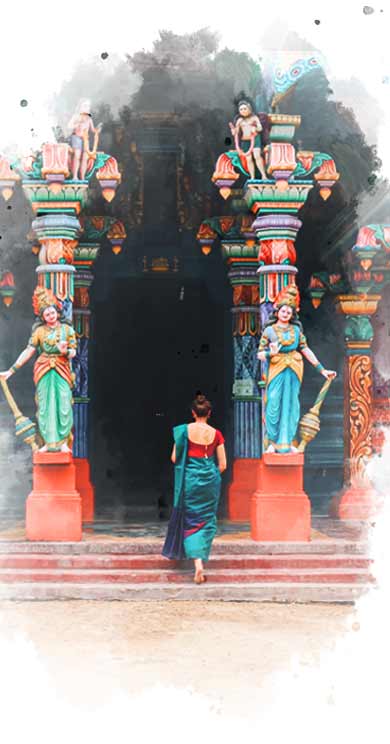
Jaffna, Nothern Cultural Capital
Things to do, weather & itineraries
The road less travelled leads to the north of Sri Lanka, where the threads of culture, history, and spirituality are woven into the tapestry of Jaffna by the devotees who breathe life into the land. As the remnant of both an ancient kingdom and a civil war that ravaged the nation, Jaffna stands as a testament to the resilience of the Tamil community, and it offers a bite-sized introduction to their vibrant culture.
At the forefront of Jaffna’s many attractions is the Nallur Kandaswamy Kovil, which reflects the grandeur of the fallen Jaffna kingdom. However, the city is also known for a Dutch fort that has weathered through the island’s many battles, a bustling marketplace where the locals sell their wares, and a pristine beach where clusters of Casuarina trees provide shelter from the blistering heat.
The average temperatures in Jaffna range from 25°C to 32°C (77°F to 89.6°F), making it one of the hottest places to see in Sri Lanka. Despite this, the best time to tour the region is during its dry season, which extends from February to August.

Jaffna, Nothern Cultural Capital
Things to do, weather & itineraries
The road less travelled leads to the north of Sri Lanka, where the threads of culture, history, and spirituality are woven into the tapestry of Jaffna by the devotees who breathe life into the land. As the remnant of both an ancient kingdom and a civil war that ravaged the nation, Jaffna stands as a testament to the resilience of the Tamil community, and it offers a bite-sized introduction to their vibrant culture.
At the forefront of Jaffna’s many attractions is the Nallur Kandaswamy Kovil, which reflects the grandeur of the fallen Jaffna kingdom. However, the city is also known for a Dutch fort that has weathered through the island’s many battles, a bustling marketplace where the locals sell their wares, and a pristine beach where clusters of Casuarina trees provide shelter from the blistering heat.
The average temperatures in Jaffna range from 25°C to 32°C (77°F to 89.6°F), making it one of the hottest places to see in Sri Lanka. Despite this, the best time to tour the region is during its dry season, which extends from February to August.
Tour itineraries featuring Jaffna
As mentioned before, the main excursions that you can enjoy in Jaffna are the Nallur Kandaswamy Kovil, the Jaffna Fort, the Jaffna Market, and Casuarina Beach. If you would like to see how these excursions fit into a typical Sri Lanka itinerary, you may refer to the sample itineraries below.
Tour itineraries featuring Jaffna
As mentioned before, the main excursions that you can enjoy in Jaffna are the Nallur Kandaswamy Kovil, the Jaffna Fort, the Jaffna Market, and Casuarina Beach. If you would like to see how these excursions fit into a typical Sri Lanka itinerary, you may refer to the sample itineraries below.

Sri Lanka Culture Trip
Discover the Magical beauty and the rich culture of Sri Lanka with our well-designed Sri Lanka culture trips.
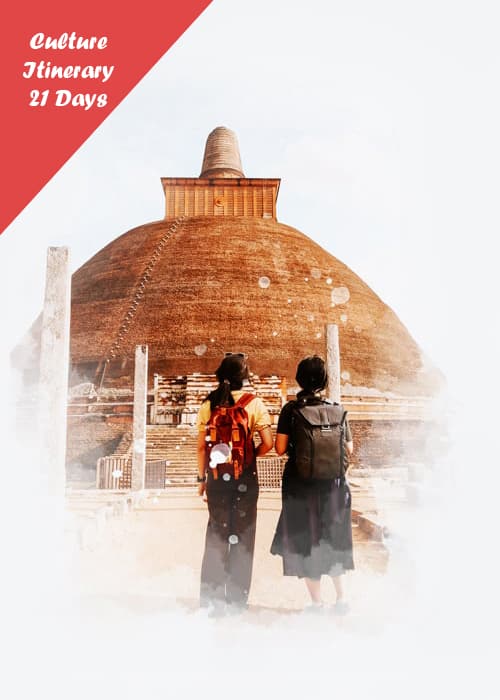
Sri Lanka in 3 Weeks
Enjoy the wildlife, nature, culture, history, and the local life of Sri Lanka with a perfect three-week Sri Lanka holiday.
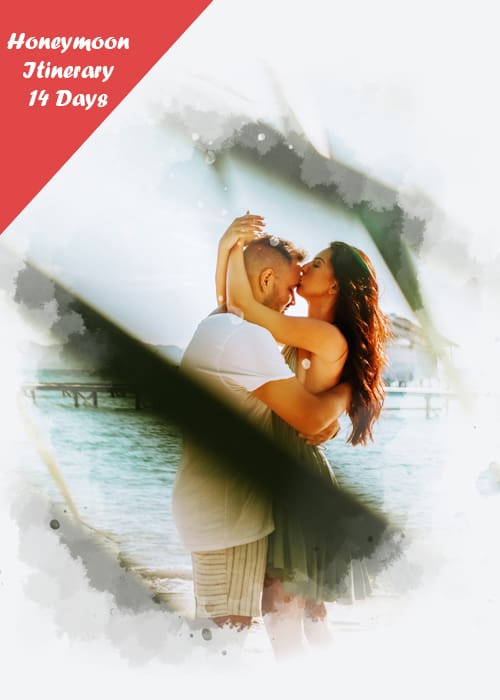
SL & MV honeymoon
Romantic honeymoon in Sri Lanka and Maldives. Celebrate your love with an amazing holiday in the tropics.
Request a Free Quotation
Would you like to get our assistance to organize your Sri Lanka holiday? Drop us a message to get a tailor-made Sri Lanka holiday package that reflects your interests, budget, tour duration and the weather conditions of the month that you visit Sri Lanka.
Things to do in Jaffna
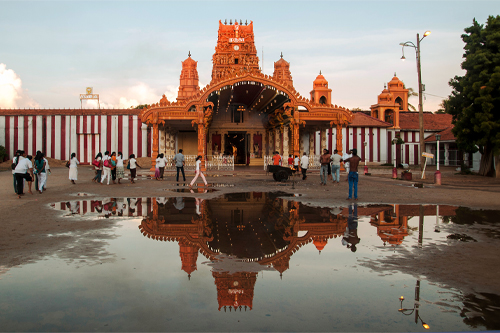
The lighting of incense and the chanting of prayers as pilgrims break coconuts to worship the gods is a common sight at the Nallur Kandaswamy Kovil, which is Jaffna’s most popular tourist attraction. Dedicated to Murugan, who reigns over war and victory in Hinduism, the temple boasts ornate sculptures and murals, Dravidian architecture, and daily rituals that offer valuable insight into Hindu customs.
Historical records have revealed that this Hindu temple was founded in 948 A.D., but its construction began only after the establishment of the Jaffna kingdom in the 14th century. Its significance grew as those inhabiting the north were encouraged to embrace Hinduism. However, the arrival of the Portuguese in the 1600s brought an end to this as the royal family was ousted and the temple was destroyed for a church to take its place.
With the permission of the Dutch, the temple was rebuilt for the fourth and final time in 1734. Although it is only a replica of the original, the temple complex is a vision of splendour that includes a main sanctum for Lord Murugan, several shrines for other deities, a holy garden and pond, as well as four Gopurams (ornate towers) which give the temple its fortress-like appearance from afar.
Most travellers visit this religious site in August for an opportunity to witness the longest holy festival on the isle. As the image of Murugan is paraded around the temple and its outskirts to give the impression of the god greeting his devotees, the pilgrims participate in ceremonial processions, dances, and acts of self-mortification to profess their devotion over the course of 25 days.
Please note that filming and photography within the temple complex is prohibited. Moreover, you must comply with the temple dress code to gain entry. Men must be bare-chested, wearing either sarongs or trousers, whereas women must conceal their bare shoulders, arms, and legs. You will also be asked to leave your hats and shoes outside.
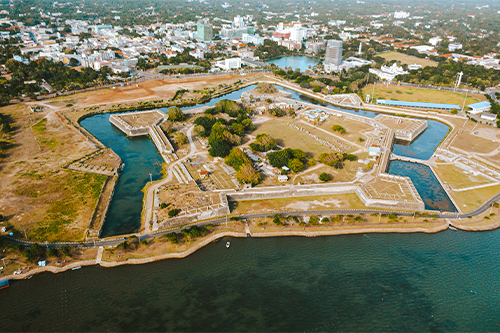
The heart of Jaffna is home to the second largest Dutch fort on the isle, where tranquillity lingers among the ruins that stand as reminders of Jaffna’s colonial past and role in the civil war. While the fort’s coral and limestone walls whisper tales of Sri Lanka’s resilience, its ramparts overlook the glistening waters of the nearby lagoon, giving travellers an opportunity to enjoy the scenery as they unearth the island’s history.
Although the construction of the fort in 1619 is credited to the Portuguese, the many alterations to its structure that resulted in its iconic pentagonal shape were supervised by the Dutch colonialists in 1658. It was then seized by the British in 1795, and it remained under their control until the island gained its independence in 1948.
However, the peace that followed in the aftermath of the colonial period was short-lived as the fort was converted into an encampment for the forces during the civil war. It was not until the war ended in 2009 that restoration efforts began, and some of the wreckage has now been restored to its original state. Currently, the fort is recognized as a landmark that represents the many battles that the country has weathered through.
While the Jaffna Fort can be toured at your own pace, it is best visited in the early morning or the late afternoon to avoid the midday heat. You may spend up to an hour here, but it is best to make the trip with a local guide who can tell you about the island’s history. Please keep in mind that you must also pay a small fee in order to be granted entry.
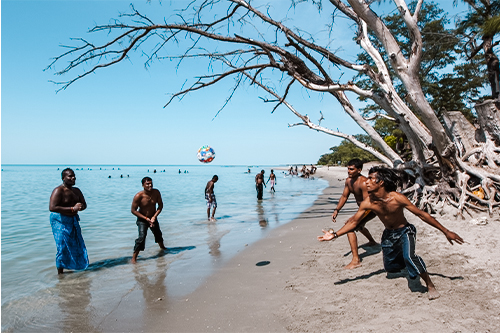
Powder-white shores, shallow waters, and a coastline fringed with Casuarina trees merge into a breathtaking beachscape at the village of Karainagar, where the gentle waves of Casuarina Beach call out to those who are in the mood for a swim. Touted as one of the best beaches of the north, Casuarina Beach is a popular pick among travellers who wish to wind down from their Jaffna adventure.
Despite its reputation, Casuarina Beach is somewhat of a hidden gem, and it attracts only a handful of tourists who are curious about what Jaffna has to offer. The lack of crowds makes it ideal for those who are on the lookout for some peace and quiet, and the small stalls nearby sell plenty of local treats that you can try after a quick dip in its waters.
Aside from its decent selection of water sports, Casuarina Beach is best known for its smooth waves which are ideal for sea baths. Travellers may also wade offshore for quite a distance as the chances of getting caught in a rip-current are extremely low. That being said, many steer clear of the coast when its waves become rougher during Jaffna’s wet season, which extends from October to December.
Please note that the journey to Casuarina Beach is a 45-minute drive across a bridge that connects to Karaitivu Island. You may flag down a tuk-tuk or ask your hired driver to take you there, and you will have to pay a small fee before you are allowed inside.
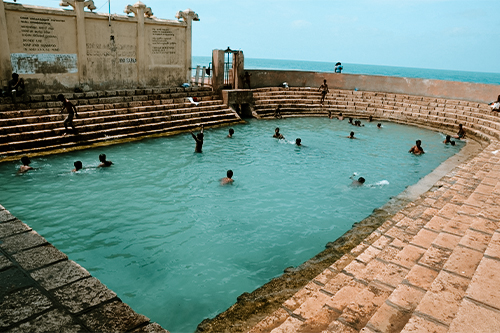
The water’s edge at the northern tip of Sri Lanka is home to the Keerimalai Pond, which lies within the walls of the Keerimalai Naguleswaram temple complex. Revered by Hindu pilgrims for its healing properties, the turquoise waters of this freshwater spring are perfect to stave off the midday heat, and the legends surrounding its origins have fascinated travellers for quite some time.
Legend has it that a sage was cursed with the face of a mongoose after angering the Hindu god of destruction, Shiva. It was only after the sage bathed in the waters of this pond that he was cured of his deformity, and he supposedly built the Keerimalai Naguleswaram Kovil beside it to express his gratitude for Shiva’s mercy.
Similarly, a Chola princess named Marutappiravikavalli was searching for a way to cure her deformity, as she had been born with the face of a horse. She visited Sri Lanka shortly after learning about the healing properties of the pond, and her deformed face became that of a human after several rituals and baths in its waters.
While it is common practice for devotees to take a dip in the pond before visiting the adjoining temple, many pilgrims travel from afar for a bath that will cure them of their skin infections. Women also bathe here to be blessed with the ability to conceive.
Before you stop by, please keep in mind that the Keerimalai Pond is divided into two sections. The main pond is strictly for men, whereas the extension of the pond that is surrounded by high walls is for women. Women are also advised to dress modestly for their bath due to the sacred nature of the pond, and the use of soaps and other artificial products is prohibited.
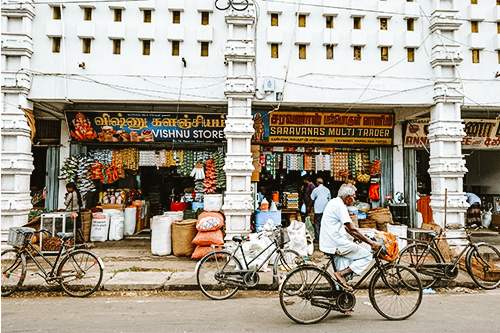
Experience a feast for the senses at the bustling Jaffna Market, where the strong aromas of food and the cacophony of locals bargaining for low prices will lead you to colourful displays of fresh produce, cloth, and trinkets. Most travellers visit the market to witness the locals at work, selling their wares and tending to their makeshift stalls in a region that remains untouched by western influence.
Unlike most of the other markets in Sri Lanka which sell crops from different parts of the isle, the Jaffna Market sells fresh produce that is grown only in the north. Apart from its fresh fruit, vegetables, herbs and spices, the market also teems with Palmyra products, such as edible roots, flour, and jaggery. The other Palmyra handicrafts on display reflect the innovative minds of the locals who have used the dry leaves of the tree to weave baskets, mats, hats, and a variety of containers.
The market is generally in full swing from dawn to dusk, so you can stop by whenever you have some free time. However, while it is ideal for learning more about life in Jaffna, its selection of souvenirs is very limited.
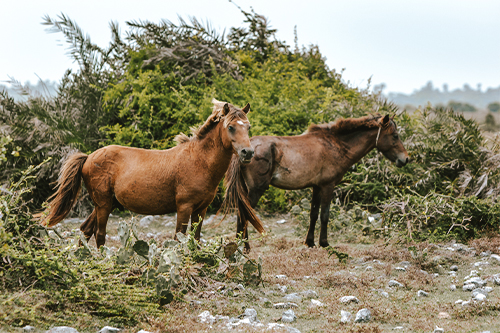
As one of the larger islands in the Palk Strait, Delft or Neduntheevu (“long island”) has intrigued travellers for many years, housing a handful of Tamil civilians and quaint attractions that can be traced back to Sri Lanka’s colonial period. Apart from its ruins, the island’s wild horses and baobab tree form a distinct part of its landscape, along with other minor attractions that will make you feel as though you have stepped into another world.
The Meekaman Fort is the most significant of its ruins. Made from coral stone, this two-storeyed structure was supposedly built by the Portuguese, but the civilians credit its construction to King Meekaman of the fisher caste. On the other hand, the Cholan ruins, which consist of three stupas, are proof that the island may have been inhabited since the first century.
In the meantime, wild horses roam the land in search of grass. These agile beasts were brought from Arabia during the Portuguese takeover, and they passed into the hands of the Dutch who seized control of the land. As time passed, the domesticated horses were left to fend for themselves, eventually making the wilderness their home. You may find them grazing beside the domesticated cattle, which are also a common sight on the dry grasslands.
There is also a single Baobab tree on Delft Island, but no one can be sure of how it got there. Some believe that the tree may have been brought to the island by Arab traders from the Middle Ages while others are of the belief that the Portuguese planted it to take advantage of its medicinal properties. That said, the tree stands as one of the three biggest Baobab trees in Sri Lanka, making it a sight to behold during your tour.
While Delft’s major attractions will certainly keep you busy, you may also stop by the ruins of the Sarapiddi Stables, the Queen’s Tower, and the famed Giant’s Footprint, which is believed to have been left behind by the Hindu monkey god, Hanuman.
If you wish to visit Delft Island, you must catch the hour-long, daily ferry from the Kurikadduwan Pier. Since this ferry makes only three trips to the island, Travellers Isle recommends taking the 8AM ferry from the mainland and returning via the 11.30AM ferry, which will leave you with ample time to see most of what the island has to offer.
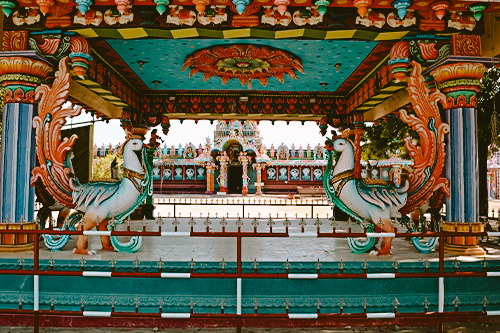
Among the cluster of islands in the Palk Strait, Nainativu stands out as the most sacred as it houses two religious sites where Buddhists and Hindus unite, along with cobra statues that honour the deity of the ancient Naga tribe. The two jetties on this island lead to the Nagadeepa Purana Viharaya and the Nagapooshani Amman Kovil, where history and mythology combine to form legends that have awed travellers for a long time.
The first jetty guides visitors to the Nagadeepa Purana Viharaya, which was renovated under the guidance of King Devanampiya Tissa and King Dutugemunu. While its tranquil atmosphere is one of its highlights, the temple is best known for its stone footprints of Buddha, as well as its gem-studded throne—a newer inclusion to remind devotees of the temple’s legend.
According to this legend, Lord Buddha visited the temple premises post-enlightenment to aid two Naga kings in solving a dispute. The kings in question were butting heads over a throne encrusted with jewels, but they soon reconciled and gifted the throne to Buddha himself to express their gratitude.
On the other hand, the second jetty leads to the Nagapooshani Amman Kovil. Dedicated to Parvati, who reigns over motherhood and beauty in Hinduism, the kovil’s Dravidian architecture, four Gopurams (ornate towers) and colourful statues of deities make it a sight to behold, especially during its annual festival which occurs in June and July.
The legend surrounding the construction of this Hindu temple begins with a conflict between a bird-like entity known as a Garuda and a serpentine Naga. A merchant who bore witness to their fight begged the Garuda to spare the Naga, and agreed to build a temple for the goddess in exchange for the Naga’s freedom. Today, the Nagapooshani Amman Kovil stands as proof of how a merchant’s kindness brought an end to the feud between the two warring races.
Please note that, in order to gain entry to the island, you must comply with the temple dress code. Men must be bare-chested, wearing either trousers or sarongs, and women must dress modestly by concealing their bare arms, legs and shoulders.
The journey to Nainativu Island is a 45-minute boat ride from the Kurikadduwan Pier. Although these boat rides operate until 6PM, it is best to set off in the early afternoon, which will give you ample time to explore the island before you catch the next boat home. If you happen to miss the last boat, you will have to pay a higher fee to take a fishing boat back to the mainland.
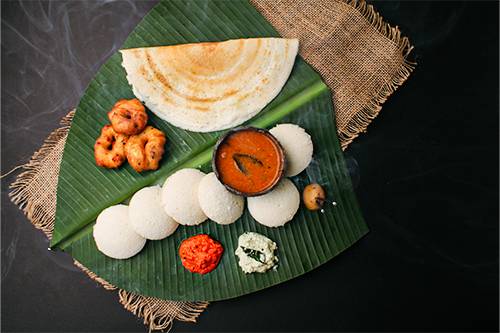 Jaffna’s religious sites and ruins take centre stage in forming its cultural heritage, but the fiery flavours of its cuisine reflect Jaffna’s bold and vibrant culture. Both flavourful and aromatic, Jaffna cuisine boasts a union between Sri Lanka and South India, resulting in a feast for the senses that cannot be experienced in any other part of the isle.
Jaffna’s religious sites and ruins take centre stage in forming its cultural heritage, but the fiery flavours of its cuisine reflect Jaffna’s bold and vibrant culture. Both flavourful and aromatic, Jaffna cuisine boasts a union between Sri Lanka and South India, resulting in a feast for the senses that cannot be experienced in any other part of the isle.
For example, Jaffna’s signature crab curry is a tangy but sweet explosion of flavour, in which the crab meat is cooked to perfection with coconut milk and local spices until it melts on the tip of one’s tongue. Its delicate texture makes it a delicious accompaniment to steamed rice and string hoppers.
On the other hand, mutton curry in Jaffna combines roasted spices and a generous serving of red chillies with the succulent mutton. This gives the curry a distinct spicy flavour that is best enjoyed with a serving of steamed rice, string hoppers or thosai (thin, crisp pancakes).
Odiyal kool is yet another Jaffna specialty, where vegetables, seafood and lentils are cooked over a high flame, resulting in a rich and fragrant soup. This tantalizing mix of prawns, cuttlefish, jackfruit seeds, long beans, aubergine, and tamarind juice also makes use of Odiyal (dried/boiled Palmyra sprout), which is known for its healing properties.
Plenty of eateries serve these dishes in Jaffna, but if you are in the mood for some vegetarian specialties, you can visit the Malayan Café, where generous portions of roti, idli, vadai and rice are served with a variety of curries on a banana leaf.
Frequently Asked Questions
1. Why is Jaffna famous?
Although Jaffna is not a common destination on most Sri Lanka tour itineraries, the city gets its fame from the local legends spun within its religious sites, the history contained within the fortified walls of its colonial ruins, the hustle and bustle of the locals at work in the marketplace, and the tranquil waters of its most popular and picturesque beach.
The Nallur Kandaswamy Kovil is the city’s main attraction. The prayers that are offered fade into the background while you gaze at the decorative paintings and intricate sculptures within, letting you visualize the major gods and goddesses of Hinduism. Even the ornate towers which surround the exterior are carved with tales of the deities’ grand feats from various Hindu epics, acting as a constant reminder that you are standing on sacred ground.
On the other hand, the ruins of the nearby fort offer an exploratory element to your adventure. The landmarks concealed within its coral and limestone walls are steeped in a rich history of colonial rule, highlighting how the country passed into the hands of the Portuguese, the Dutch, and the British before it was reclaimed by the locals. Similarly, the surrounding wreckage is a testament to Jaffna’s past as the former epicentre of the civil war.
The bustling Jaffna Market is also a point of interest for travellers, as it is known for its vast selection of Palmyra products and fresh produce. Simply watching the crowds haggle over different products is enough to understand how the locals work tirelessly to maintain their livelihoods.
Lastly, the crystalline waters of Casuarina Beach are also considerably popular, and its serene setting makes it the perfect getaway for a digital detox. As you bathe in its shallow waters and challenge yourself with its limited selection of water sports, you may also enjoy a crispy snack under the shelter of the nearest Casuarina tree, marking the perfect end to your Jaffna stay.
2. Is Jaffna worth visiting?
Absolutely. As the cultural capital for Sri Lankan Tamils, Jaffna’s rich fabric is woven from its spirituality, history, and strong sense of community, which merge to form a setting that remains untouched by western influences. The process of learning about Jaffna’s cultural heritage comes with the distinct feeling of having walked into another world, revealing a very different side of the local culture that makes it well worth a visit during your stay.
In fact, a tour of the Nallur Kandaswamy Kovil and the Nagapooshani Amman Kovil will unveil a history of Tamil rule. After the establishment of the Jaffna kingdom in the 14th century, Jaffna’s importance grew, resulting in the construction of Hindu temples and the growth of local Tamil literature until the Portuguese takeover. The splendour of this fallen kingdom is reflected in Jaffna’s religious sites, and its annual festivals are a dazzling spectacle of ceremonial processions that will leave you in awe.
Alternatively, the quaint landmarks of Delft Island and the Dutch fort are a gateway to Jaffna’s colonial past. While they both showcase the island’s history under the colonial powers, the fort especially draws attention to how the country was ravaged by the civil war. And so, exploring these sites will help you uncover Sri Lanka’s history, ultimately making Jaffna the ideal destination for history buffs.
Moreover, what makes Jaffna so worth the visit is the resilience of its community. Despite its grim past as a war-torn land, colourful paintings of its major attractions and Hindu deities adorn the streets, echoing the hopes of the locals. Though they may appear to be shy, the Jaffna community is very friendly and hospitable to all.
All of these aspects have earned Jaffna its reputation as one of the top destinations to visit on the isle, making it a possible inclusion on most tour itineraries.
3. When to visit Jaffna Sri Lanka?
The best time to visit Jaffna is from February to August, as this is when the region is least likely to experience rainfall. However, since it is also the dry season, you will experience hot temperatures that peak during midday.
Generally, travellers are advised to wear thin, moisture-wicking fabrics during their stay, and to avoid the outdoors until the heat has passed. This will let you make the most of your time in Jaffna without being hindered by the hot weather.
4. How long do you need in Jaffna?
You will need 3 days to visit Jaffna’s main attractions at your leisure. However, if you have some time to spare and you would like to experience the best of Sri Lanka’s Tamil culture at a slower pace, you may extend your stay by an extra day.
5. Is it safe to visit Jaffna?
Of course. Although Jaffna has weathered through colonial takeovers and a civil war, it is a relatively safe tour destination. There are no wars underway and no major health concerns that you should be aware of.
More Tips for Your Holiday
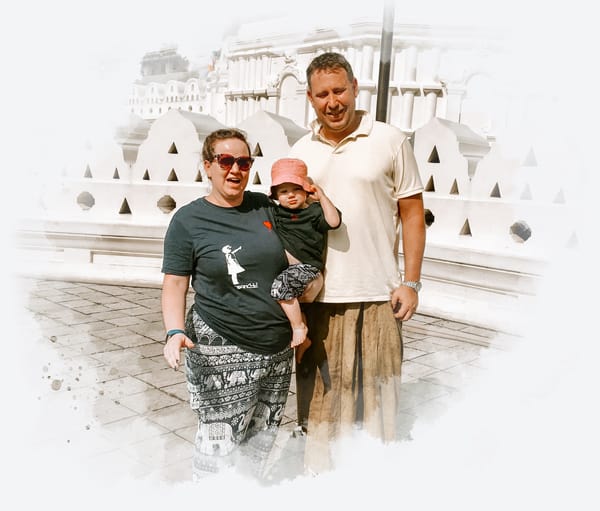
"We have had our amazing driver taking us around Sri Lanka with our 15 month old daughter for the last two weeks. Everything has been organized for us and everything has been perfect.Anyone thinking about going to Sri Lanka with their little ones should book with Travellers Isle. Nothing has been too much trouble for them. All hotels have been fabulous and our driver has been so helpful, amazing with our daughter, professional and knowledgeable."

